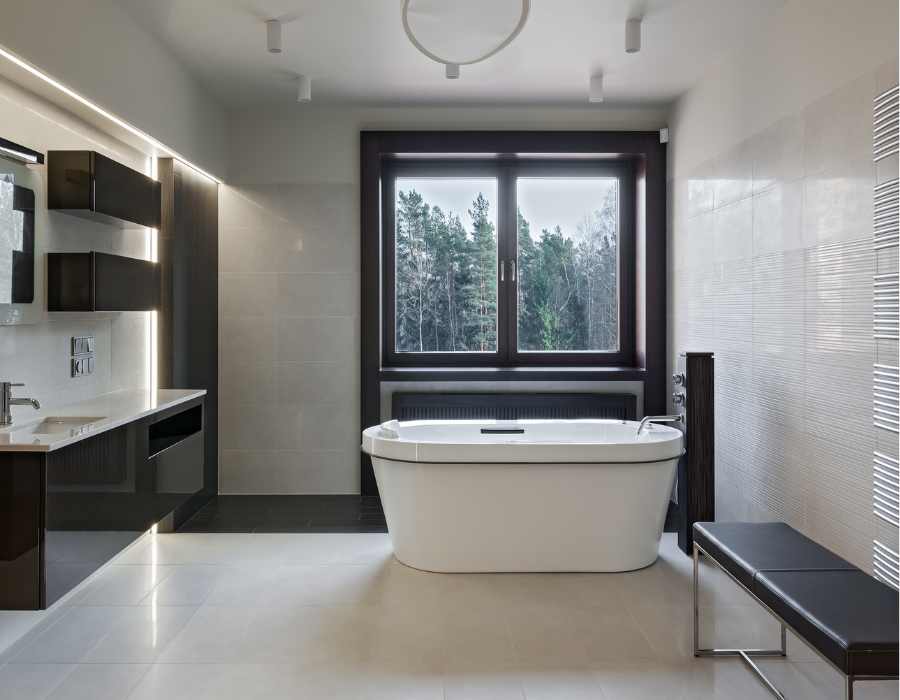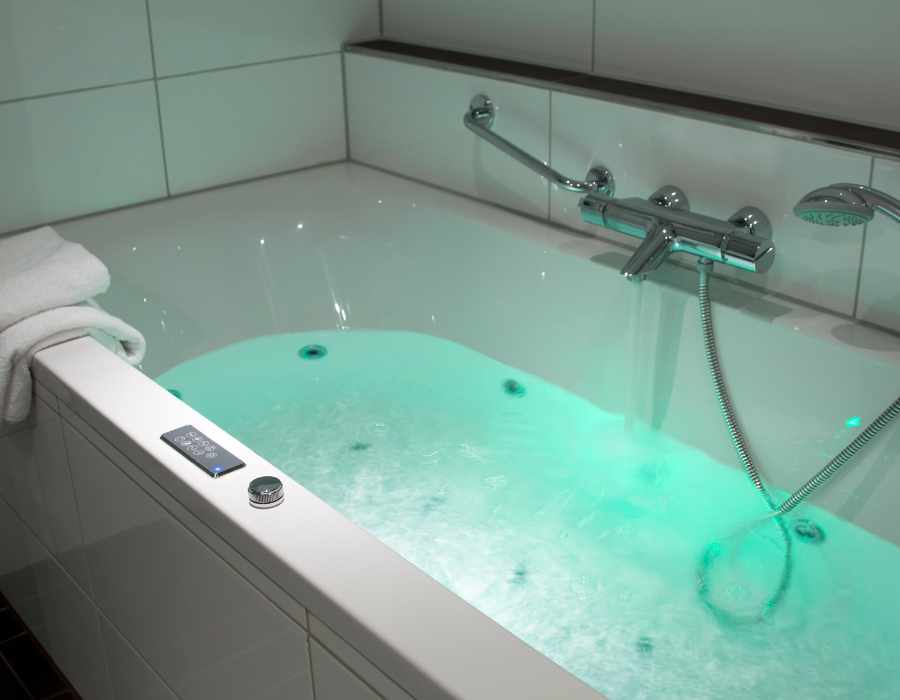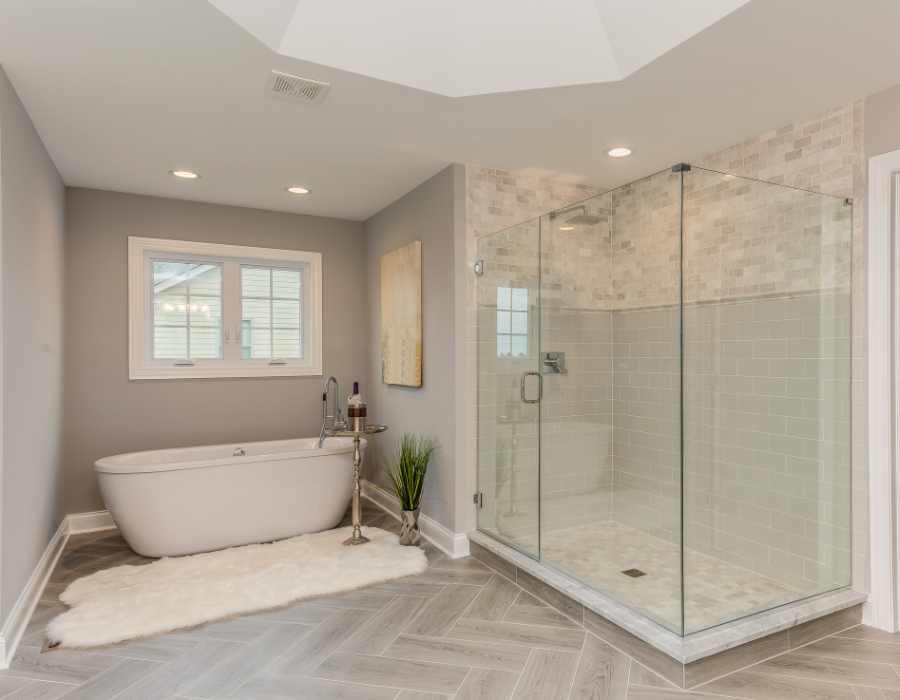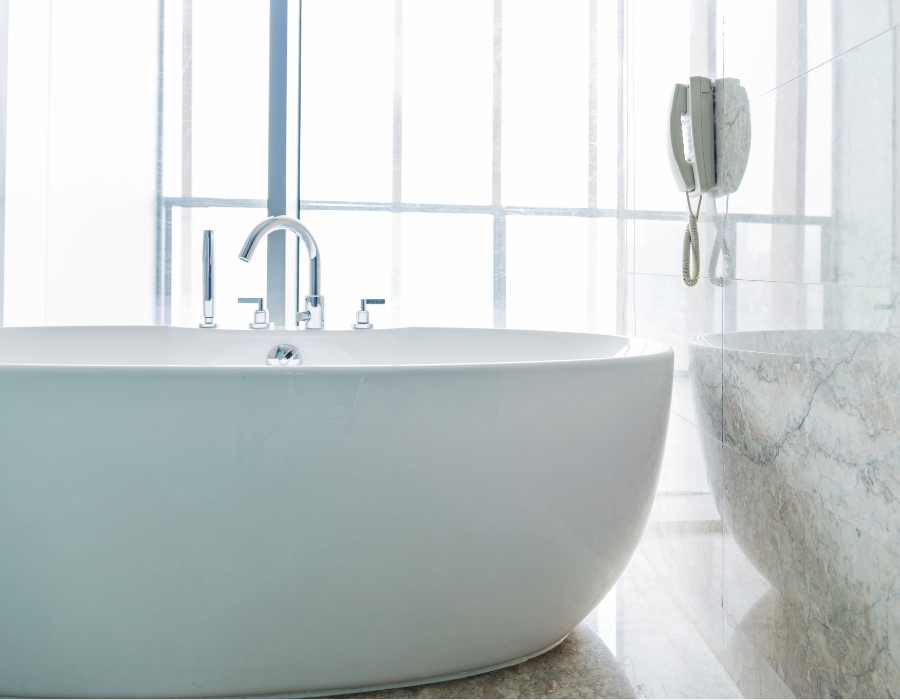How Much Are Walk In Tubs | Cost Guide 2024
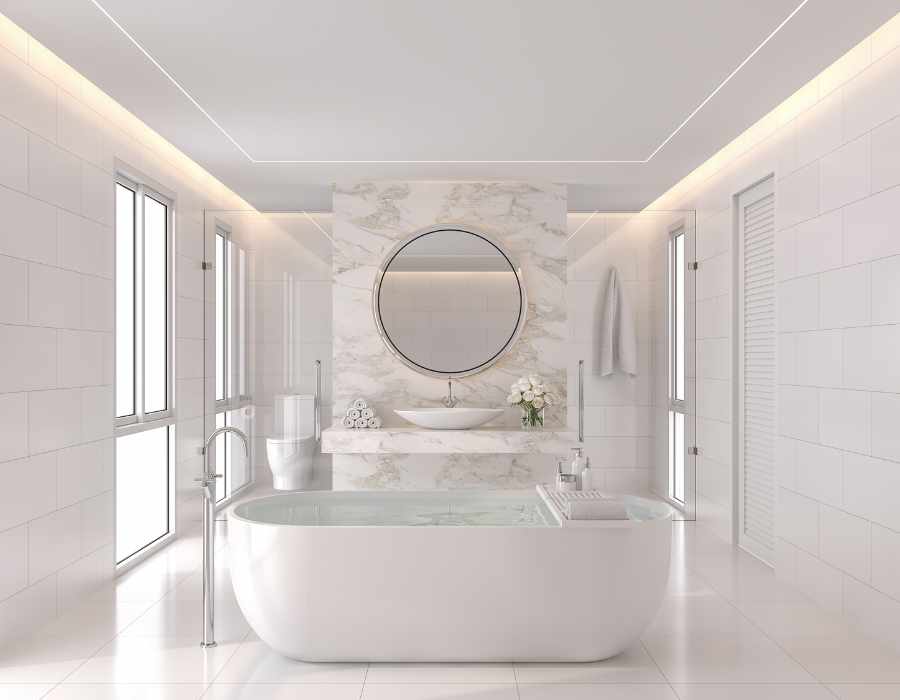
Installing a walk-in tub can greatly improve bathroom accessibility and safety, but it is also a significant investment. With prices ranging from $1,500 on the low end to $15,000 or more for high-end models, understanding the factors that influence walk-in tub costs is crucial for budgeting accurately.
In this comprehensive guide, we will break down the typical price range for walk-in tubs and the variables that impact that price tag, including size, materials, special features, brand reputation, and more.
We will also dig into the installation, labor, permits, and additional expenses that are often overlooked when initially estimating a budget. Beyond just the upfront purchasing costs, you also need to consider long-term maintenance fees and potential repair bills to determine the tub’s overall lifetime value.
Whether you’re hoping to add accessibility features to your own home bath, help an aging parent gain independence, or increase the value and marketability of an investment property, this guide aims to provide the details you need to make an informed decision when investing in a walk in bathtub.

Maintenance Cost For Walk-in Tub
Maintaining a walk-in tub is imperative for preserving its functionality and ensuring a safe, hygienic bathing experience. The maintenance costs can vary, but understanding the specific tasks and potential costs involved can help you budget accordingly.
Regular Cleaning and Inspection
Daily and Weekly Cleaning: To prevent mold, mildew, and soap scum buildup, regular cleaning is essential. Use non-abrasive cleaners designed for walk-in tubs to maintain the surface integrity. This routine maintenance does not have a significant cost but requires time and diligence.
Periodic Seal and Jet Inspection: Every few months, inspect the door seals and water jets (if your tub has hydrotherapy features) for any signs of wear or damage. Replacing seals or cleaning jets might cost between $50 to $150, depending on the tub model and the part’s availability.
Professional Maintenance Checks
Annual Inspections: It’s advisable to have a professional check your walk-in tub annually. They can inspect electrical components, plumbing connections, and the overall tub condition. This service can range from $100 to $200 but can prevent costly repairs by catching issues early.
Repair Costs
Minor Repairs: Simple repairs, such as fixing a leaky faucet or replacing a worn-out seal, can be relatively inexpensive, generally under $200.
Major Repairs: More significant issues, such as malfunctioning hydrotherapy jets or a faulty door mechanism, can be more costly to address, potentially exceeding $500, especially if parts are hard to find or if the tub is an older model.
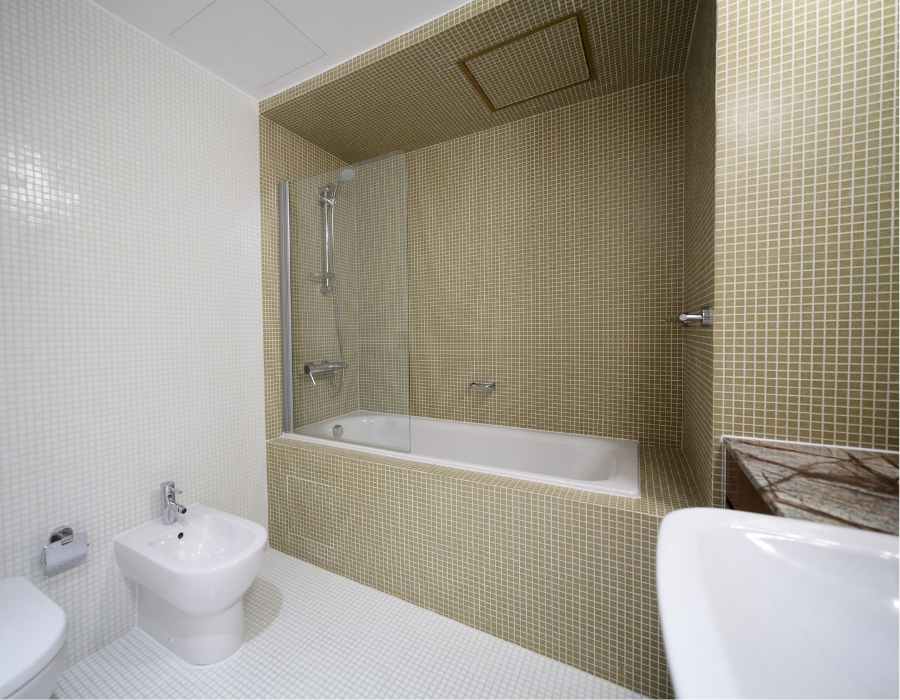
DIY Maintenance vs. Professional Services
DIY Maintenance: Many walk-in tub maintenance tasks, like regular cleaning and basic inspections, can be performed by the homeowner. This approach can save money but requires a commitment to regular upkeep.
Professional Services: For more complex maintenance, such as electrical or plumbing work, hiring a professional is recommended. This ensures the work is done safely and correctly, although it will add to the maintenance cost.
Extended Warranties and Service Plans
Investing in an extended warranty or a service plan can provide peace of mind and potentially save money on future repairs. These plans vary in walk in tub prices but can offer comprehensive coverage for parts and labor, reducing unexpected expenses.
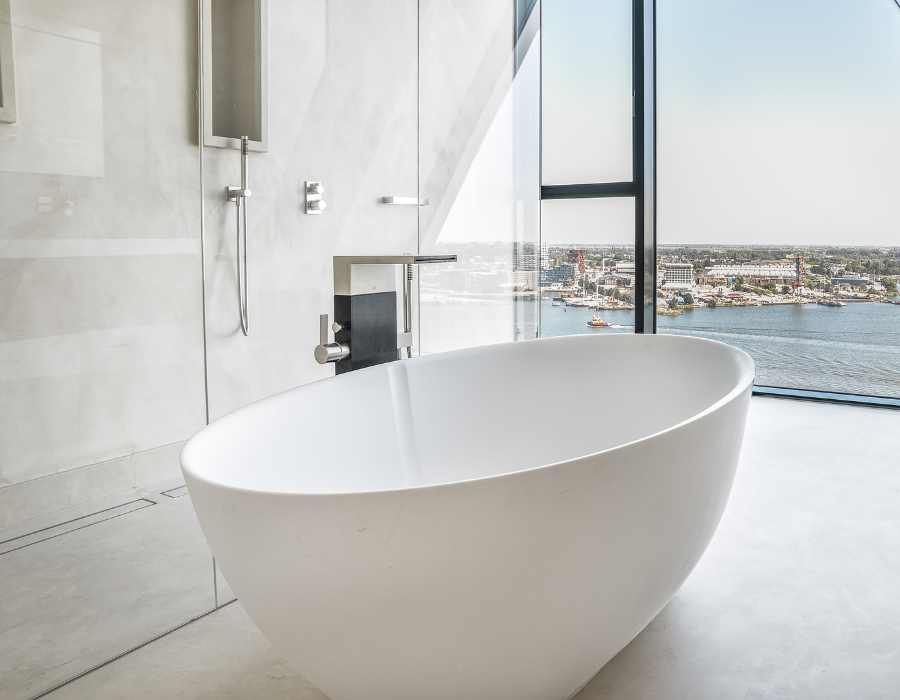
Factors That Affect The Walk-In Tub Cost
The cost of a walk-in tub can vary widely, influenced by several key factors. Understanding these can help you navigate the options and make informed decisions tailored to your needs and budget.
Tub Size and Design
Compact vs. Full-Size: Smaller tubs designed for tight spaces often cost less than full-sized models that offer more room to stretch out.
Design Complexity: Tubs with intricate designs or customized shapes to fit unique bathroom layouts may carry a higher price tag due to the increased manufacturing complexity.
Material Quality
Acrylic vs. Fiberglass: Acrylic tubs, known for their durability and high-gloss finish, typically cost more than fiberglass options. Fiberglass may be more budget-friendly initially but may not have the longevity or easy maintenance of acrylic.
Thickness and Reinforcement: The material’s thickness and any additional reinforcement can affect both the tub’s performance and cost. Heavier, reinforced tubs might require more investment upfront but offer better durability and heat retention.
Brand and Manufacturing Standards
Brand Reputation: Well-known brands with a track record for quality and customer service often command higher prices. However, the investment can be worthwhile for the reliability and warranty coverage they offer.
Certifications: Tubs that meet specific industry standards or certifications (like ADA compliance) may be more expensive due to the higher manufacturing and testing standards they adhere to.
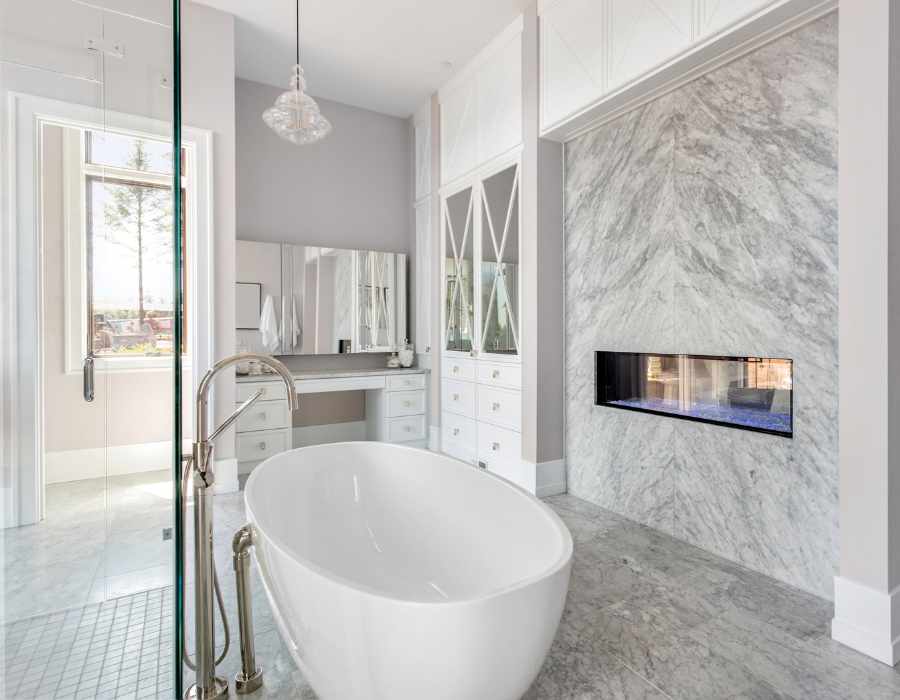
Features and Customizations
Basic Safety vs. Therapeutic Features: A basic walk-in tub with standard safety features like grab bars and anti-slip flooring will be less expensive than one equipped with therapeutic features such as hydrotherapy jets, air jets, or chromotherapy lighting.
Custom Add-Ons: Personalized features like heated seating, quick-fill faucets, or custom color finishes can add to the cost. These enhancements improve the bathing experience but will increase the overall investment in your tub.
Technology and Innovation
Advanced Water Jets: Tubs with sophisticated hydrotherapy systems, offering customizable jet options and water flow controls, can significantly increase the price.
Digital Controls: Models featuring digital control panels for easy operation of jets, temperature, and other features can add to the cost due to the added technological components.
Energy Efficiency and Eco-Friendly Features
Insulation: Most walk in tubs with superior insulation not only retain heat better but also can reduce energy costs. However, this added efficiency can come with a higher upfront cost.
Eco-Friendly Materials: Tubs made from sustainable or eco-friendly materials may carry a premium due to the cost of sourcing and manufacturing these less common materials.
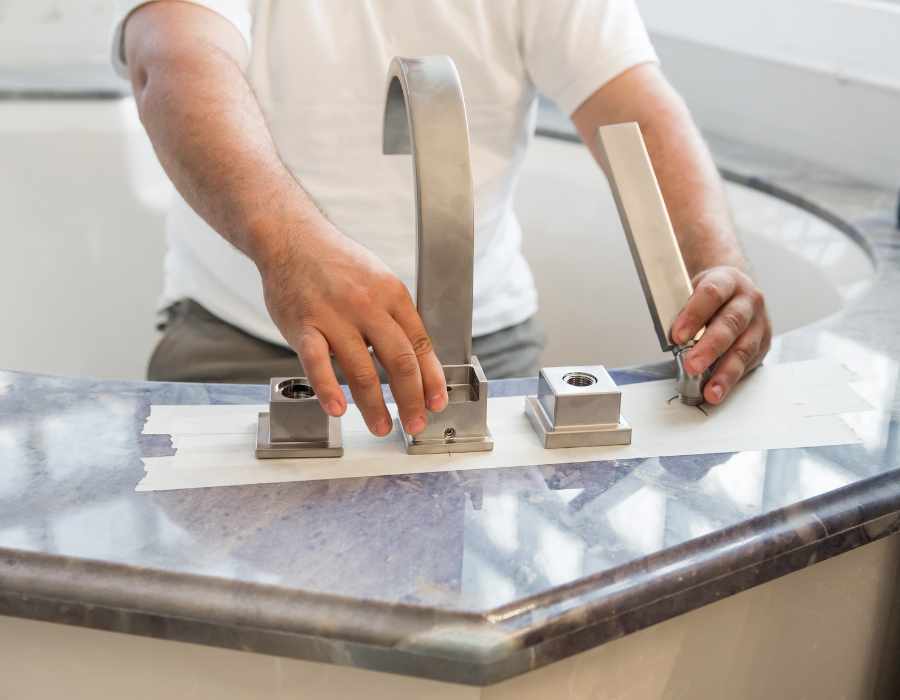
Walk-in Tub Labor and Installation Costs
The labor and installation costs for a walk-in tub can be quite variable and depend on several factors, including the complexity of the installation, the condition of your existing bathroom, and the need for additional modifications or upgrades.
Understanding these costs is crucial for budgeting your walk-in tub project accurately.
Basic Tub Installation
Standard Replacement: If the walk-in tub is replacing a standard tub and no major modifications are needed, installation costs might range from $700 to $1,500. This includes removing the old tub, installing the new one, and making basic plumbing connections.
Labor Rates: Labor costs can vary significantly by region and the expertise of the installers. Professional plumbers or specialized walk-in tub installation technicians may charge higher rates due to their expertise in ensuring a leak-proof and functional setup.
Complex Installations
Bathroom Layout Changes: If the walk-in tub requires a different footprint than the existing tub or shower, costs can increase due to the need to reconfigure plumbing, move walls, or alter the floor plan. This type of installation can easily exceed $3,000, depending on the extent of the changes.
Electrical Upgrades: Advanced features like air or whirlpool jets, inline heaters, or digital controls may require additional electrical work, including new outlets or a dedicated circuit. Electrical upgrades can add $500 to $1,500 to the installation cost, depending on your home’s current electrical system’s capacity and the local codes.
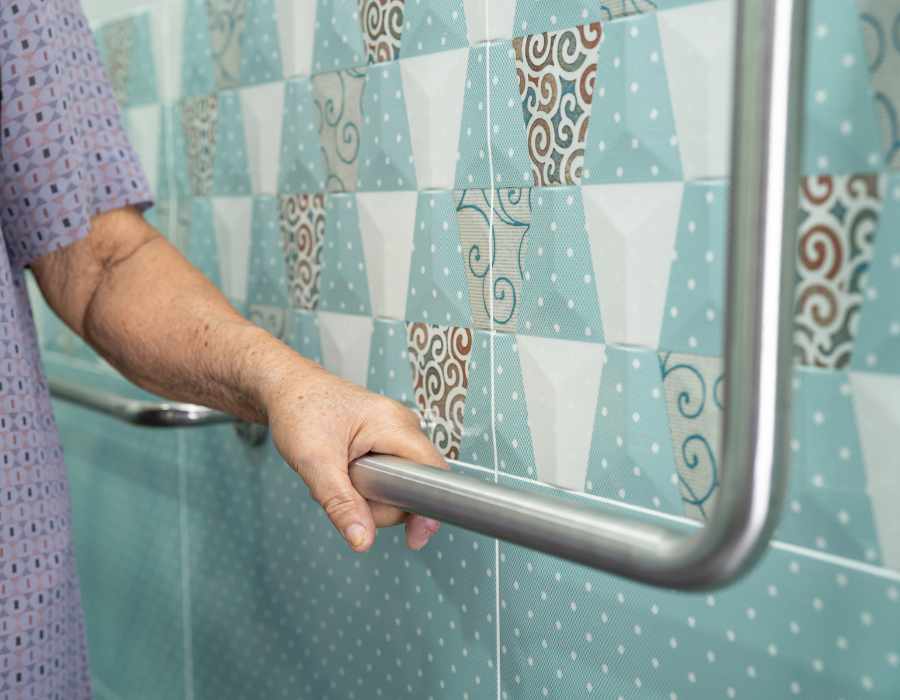
Accessibility Modifications
Door Widening: For wheelchair access, doorways may need to be widened, which can cost between $500 and $2,500, depending on the structure and finish required.
Grab Bars and Non-Slip Flooring: Installing safety features such as grab bars and anti-slip flooring can add $100 to $500 to the overall cost, enhancing the safety and accessibility of the bathroom.
Plumbing Adjustments
Water Heater Upgrade: A larger or more efficient water heater may be necessary to fill the walk-in tub adequately, especially for larger or hydrotherapy tub models. Upgrading a water heater can cost between $800 and $1,500, including the unit and installation.
Additional Plumbing Lines: Installing new water lines or drain lines to accommodate the tub’s location or features can add $500 to $2,000 to the project, depending on the complexity of the plumbing work.
Permits and Inspections
Building Permits: Depending on your locality, you may need a permit for the installation, especially if significant plumbing or electrical work is involved. Permit costs can vary widely but typically range from $50 to $500.
Inspection Fees: After installation, a final inspection may be required to ensure the work complies with local building codes. Inspection fees can add an additional $100 to $300 to your project.
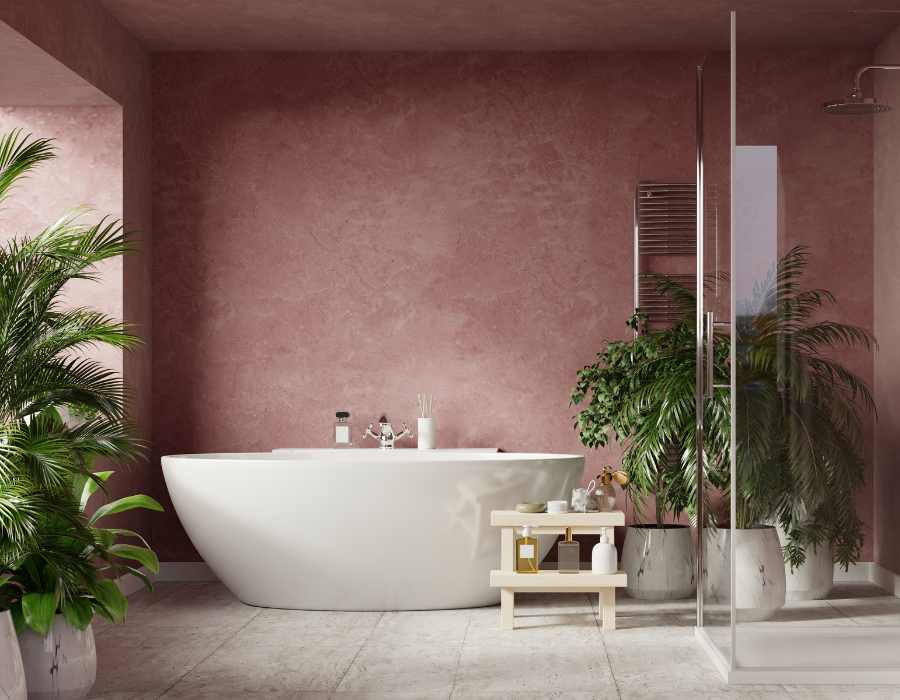
Types of Walk-In Tubs
Walk-in tubs come in various types, each designed to meet specific needs and preferences. The cost of each type can vary greatly depending on features, size, and brand.
Here’s a closer look at the different types of walk-in tubs and their associated price ranges:
Standard Walk-In Tub
These tubs provide basic accessibility features such as a low step-in threshold, grab bars, and a built-in seat. They are designed for easy entry and exit, offering a safer bathing option for those with limited mobility.
Price Range: $1,500 to $5,000. The cost depends on the quality of materials, brand, and any additional safety features included.
Soaking Tubs
Soaking tubs are deeper than standard walk-in tubs, allowing for full-body immersion without hydrotherapy jets. They are ideal for a simple, relaxing soak.
Price Range: $2,000 to $6,000. The price varies based on depth, size, and the inclusion of extra features like quick-drain systems or enhanced safety features.

Hydrotherapy Tubs
These tubs come equipped with water and/or air jets that provide therapeutic massages, which can help with muscle relaxation, improved circulation, and pain relief.
Price Range: $5,000 to $10,000+. The higher cost reflects the advanced technology, the quality of the jet systems, and additional features like adjustable jet strength and directional controls.
Wheelchair Accessible Tubs
Featuring outward-swinging doors and wider entryways, these tubs are specifically designed to accommodate individuals in wheelchairs. They allow for easy transfer from the wheelchair to the tub seat.
Price Range: Wheelchair accessible walk in tub ranges $3,000 to $8,000. The cost accounts for the specialized design, safety features, and possibly larger size to facilitate easier access.
Bariatric Tubs
Bariatric tubs are designed for larger individuals, with wider doorways and stronger support structures. They ensure safe and comfortable bathing for users with higher body weight.
Price Range: $4,000 to $10,000. The price reflects the reinforced construction, larger dimensions, and enhanced durability required to support greater weights.
Price Determinants
The price of each walk-in tub type is influenced by several factors:
- Materials: High-quality acrylic and fiberglass are common materials, with acrylic being generally more expensive due to its durability and better finish.
- Features: Advanced features like hydrotherapy jets, chromotherapy lighting, and heated seats can significantly increase the cost.
- Brand: Renowned walk in tub brands often charge more for their walk-in tubs due to their reputation, warranty offerings, and customer service.
- Installation Complexity: The ease or difficulty of installation can also impact the final cost. Tubs requiring extensive bathroom modifications or plumbing/electrical upgrades will be more expensive to install.
Wheelchair Accessible Tubs
Wheelchair-accessible tubs are specifically designed to accommodate individuals who rely on wheelchairs for mobility, offering features that enable easy transfer from wheelchair to tub. These tubs play a crucial role in fostering independence and ensuring a safe, comfortable bathing experience for users with mobility challenges.
Design Features
Outward-Swinging Doors: These walk in bathtubs typically feature doors that swing outward, providing a wider opening that facilitates easier access for wheelchair users. This design allows for direct lateral transfers from the wheelchair to the tub’s built-in seat.
Lower Thresholds: The step-in threshold is designed to be as low as possible, minimizing the effort required to enter and exit the tub. Some models may have thresholds as low as a few inches, further reducing the risk of trips and falls.
Built-In Seats at Wheelchair Height: The seats in wheelchair-accessible tubs are positioned at a similar height to wheelchair seats, usually around 17 to 19 inches from the tub base. This alignment allows for a smoother transition into and out of the tub.
Grab Bars and Handrails: Strategically placed grab bars and handrails provide additional support during transfers, enhancing safety and stability for the user.
Anti-Slip Flooring: The tub floor is equipped with anti-slip textures or materials, reducing the risk of slips and falls during transfers and while bathing.
Cost Factors
Wheelchair-accessible tubs are engineered with specific design considerations to meet the needs of wheelchair users, which can influence their cost:
Specialized Design: The enhanced accessibility features and the need for precision in design and manufacturing contribute to the higher cost of these tubs.
Customization: Many wheelchair-accessible tubs offer a range of customization options to fit various bathroom layouts and user needs, potentially increasing the price.
Quality and Durability: These tubs are built to withstand frequent use and the additional stresses of transfers, necessitating high-quality, durable materials that can impact the overall cost.
Price Range
The price range for wheelchair-accessible tubs typically falls between $3,000 and $8,000, although this can vary based on brand, features, and installation requirements. The cost reflects the specialized design, safety features, and the potential need for custom modifications to accommodate specific user needs or bathroom layouts.
Installation Considerations
Professional Installation: Due to the specific requirements for accessibility and safety, professional installation by experienced technicians is recommended. This ensures that the tub is installed correctly and complies with all necessary accessibility standards.
Bathroom Modifications: Depending on the existing bathroom setup, additional modifications may be required to accommodate the wheelchair-accessible tub, such as door widening, repositioning of fixtures, or reinforcement of the bathroom floor space. These modifications will add to the overall project cost.
Walk-In Tubs Material and Cost
The material from which a walk-in tub is constructed plays a significant role in its durability, appearance, maintenance requirements, and cost. The two most common materials used for walk-in tubs are acrylic and fiberglass, each offering distinct advantages and considerations.
Acrylic Walk-In Tubs
Acrylic tubs are made from a thick, durable sheet of acrylic that is heated and stretched over a mold. They are then reinforced with fiberglass to add strength and durability.
Advantages
- Durability: Acrylic is known for its long-lasting properties, resisting scratches, fading, and wear over time.
- Ease of Maintenance: The non-porous surface of acrylic makes it resistant to mold and mildew, making it easier to clean and maintain.
- High-Gloss Finish: Acrylic tubs have a lustrous, high-gloss finish that maintains its shine, contributing to the aesthetic appeal of the walk in bath.
- Cost: Acrylic walk-in tubs generally fall in the mid to high price range, typically between $3,000 and $8,000, depending on the size, features, and brand. The higher cost reflects the material’s durability, aesthetic appeal, and longevity.
Fiberglass Walk-In Tubs
Fiberglass, or Fiberglass Reinforced Plastic (FRP), tubs are made by molding layers of fiberglass into the shape of a tub, which is then coated with a gelcoat resin.
Advantages
- Lower Initial Cost: Fiberglass tubs are generally less expensive than their acrylic counterparts, making them a more budget-friendly option, with prices ranging from $1,500 to $5,000.
- Lightweight: Fiberglass tubs are lighter than acrylic, which can simplify and reduce the cost of the installation process.
- Flexibility in Design: The material allows for more diverse shapes and sizes, offering flexibility in design options.
Considerations
- Durability: Fiberglass is more prone to fading, scratching, and cracking over time compared to acrylic.
- Maintenance: The porous nature of the gelcoat surface can make cleaning more challenging and may require more frequent maintenance to prevent staining and the growth of mold and mildew.
Gelcoat Fiberglass Walk-In Tubs
Gelcoat fiberglass tubs are similar to standard fiberglass tubs but feature a high-quality gelcoat finish applied over the fiberglass structure. This gelcoat provides a smooth, glossy surface.
Advantages
- Cost-Effectiveness: Gelcoat fiberglass tubs offer a balance between the affordability of standard fiberglass and the durability and appearance of acrylic.
- Finish Quality: The gelcoat surface provides a glossy finish that enhances the tub’s aesthetic appeal, though not as durable as the acrylic finish.
- Cost: Prices for gelcoat fiberglass walk-in tubs range from $2,000 to $6,000, making them a mid-range option. The cost varies based on the tub’s size, design, and additional features.
Solid Surface Materials
Solid surface materials, such as stone resin, are made from a blend of natural stone and synthetic resins. This combination creates a sturdy, homogenous material that can be molded into various shapes.
Advantages
- Durability and Strength: Solid surface materials are known for their strength, resistance to impact, and durability, making them an excellent choice for a long-lasting walk-in tub.
- Aesthetic Appeal: These materials can mimic the look and feel of natural stone, offering a luxurious and high-end appearance.
- Heat Retention: Solid surface tubs are excellent at retaining heat, ensuring a warm, comfortable soak.
- Cost: Solid surface walk-in tubs are on the higher end of the price spectrum, typically ranging from $5,000 to $10,000 or more. The premium price reflects the material’s quality, durability, and luxurious finish.
Cast Iron
Cast iron walk-in tubs are made by pouring molten iron into a mold, then coating it with a layer of porcelain enamel. This process creates a heavy, durable tub.
Advantages
- Longevity: Cast iron is incredibly durable and resistant to chips, scratches, and dents, ensuring the tub lasts for many years.
- Classic Aesthetic: The porcelain enamel finish provides a classic, timeless look that can complement various bathroom styles.
- Heat Retention: Cast iron is excellent at retaining heat, keeping bathwater warm for extended periods.
Considerations
- Weight: Cast iron tubs are significantly heavier than other materials, which may require additional floor reinforcement and can complicate installation.
- Cost: Due to the material’s durability and classic appeal, cast iron walk-in tubs are among the most expensive, with prices starting at around $6,000 and going up to $15,000 or more, depending on the size and features.
Popular Walk-in Tub Features and Costs
Walk-in tubs come equipped with a variety of features aimed at enhancing safety, comfort, and therapeutic benefits. These features can significantly influence the overall cost of the tub. Understanding the benefits and associated costs of these popular features can help you make an informed decision tailored to your needs and budget.
Therapeutic Features
- Hydrotherapy Jets: These jets provide a massaging effect, ideal for relieving muscle tension and improving circulation. Adding hydrotherapy jets to a walk-in tub can increase the cost by $1,000 to $3,000, depending on the number and type of jets.
- Air Jets: Air jets create a gentler, effervescent massage effect, which can be soothing for sensitive skin. Incorporating air jet systems can add approximately $1,000 to $2,500 to the price of the tub.
- Dual Systems: Some tubs offer both air and water jets for a comprehensive therapy experience, combining the benefits of hydrotherapy and soft tissue massage. This dual system can raise the cost by $2,000 to $4,000.
Comfort and Convenience Features
- Heated Seating: Integrated seat heaters enhance comfort during the bath, especially while waiting for the tub to fill or drain. This feature can add $200 to $600 to the overall cost.
- Quick-Fill Faucets: These faucets are designed to fill the tub quickly, reducing wait times. Upgrading to quick-fill faucets can increase the cost by $300 to $800.
- Fast Drain Systems: Enhanced drain technology allows the tub to empty quickly, making it safer and more convenient to exit the bath. Installing a fast drain system can add about $200 to $500 to the tub’s price.
- Chromotherapy Lighting: LED lights that change colors can provide therapeutic benefits and enhance the bathing experience. Adding chromotherapy lighting can increase the cost by $300 to $700.
Safety Features
- Anti-Scald Valves: These valves prevent hot water burns by regulating the water temperature. Installing anti-scald technology can add $100 to $300 to the cost of the tub.
- Ozone Cleaning Systems: These systems help sanitize the water and the tub’s jets, reducing the risk of bacterial growth. An ozone cleaning system can increase the tub’s price by $200 to $500.
- UV Light Sanitization: Similar to ozone systems, UV light can sanitize the water and surfaces, ensuring a clean bathing environment. This feature can add $300 to $600 to the overall cost.
Aesthetic Enhancements
- Custom Colors and Finishes: Customizing the color or finish of your walk-in tub to match your bathroom decor can increase the cost by $200 to $1,000, depending on the complexity and type of finish.
- Luxury Materials: Upgrading to higher-end materials for the tub’s exterior, such as luxury tiles or stone, can significantly increase the price, potentially adding thousands of dollars to the cost, based on the materials chosen and the extent of the customization.
Cost-Benefit Analysis
When considering these features, weigh the immediate cost against the long-term benefits, such as improved health, increased safety, and enhanced bathing comfort. While some features may seem like a luxury walk, they can provide significant therapeutic benefits or essential safety enhancements that justify the additional investment.
Additional Costs and Considerations for Walk-In Tubs
When planning for a walk in shower and walk-in tub installation, there are several additional costs and considerations that can impact the overall project budget. It’s essential to account for these potential expenses to ensure a smooth installation process and to avoid unexpected financial surprises.
Old Tub Removal
Cost Range: $300 to $800. Removing an existing bathtub or shower unit to make space for a new walk-in tub involves labor costs and, potentially, disposal fees. The price can vary based on the size and material of the old tub and the complexity of its removal.
Floor Reinforcement
Cost Range: $500 to $1,500. Walk-in tubs, especially when filled with water, are significantly heavier than standard tubs. Some installations may require additional floor reinforcement to support this weight, which can include structural assessments and modifications.
Tiles and Surrounds
Cost Range: $800 to $2,500. Installing a new walk-in tub might necessitate redoing the tile work or surrounds to accommodate the new tub’s dimensions and ensure waterproofing. This cost can vary widely based on the choice of materials and the extent of the tile work required.
Plumbing and Electrical Upgrades
Plumbing Costs: $500 to $1,500. Adjustments to existing plumbing lines may be needed to fit the new tub, including moving pipes or installing new fixtures.
Electrical Costs: $400 to $2,000. Walk-in tubs with advanced features like hydrotherapy jets or heated seats may require new electrical lines, GFCI outlets, or even upgrades to the home’s electrical panel to handle the additional load.
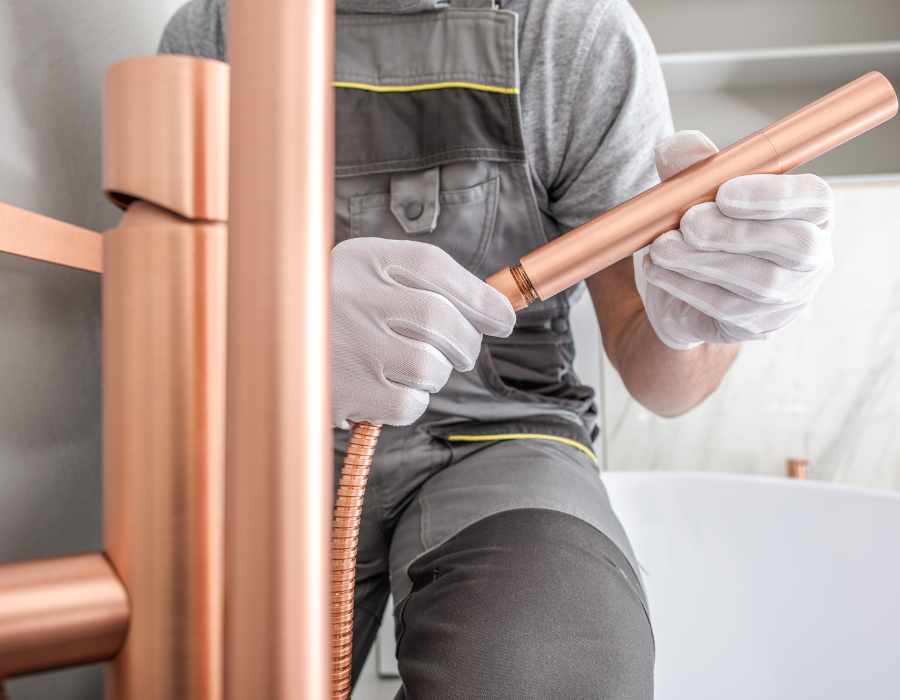
Bathroom Remodeling
Cost Range: $2,000 to $10,000+. In some cases, installing a walk-in tub and walk in tub shower might be part of a larger bathroom remodeling project, which can include updating vanities, lighting, flooring, shower chair, and painting. The extent of the remodel will significantly influence the total cost.
Shower-to-Tub Conversion
Cost Range: $1,500 to $5,000. Converting an existing shower space to accommodate a walk-in tub shower involves several modifications, including plumbing adjustments, new enclosures, and possibly expanding the shower’s footprint.
Extra Features and Upgrades
Cost Range: $200 to $4,000+. Adding luxury or therapeutic features to the walk-in tub, such as hydrotherapy jets, chromotherapy lighting, or heated seats, can significantly increase the overall cost. Each feature comes with its own price tag, contributing to the final total.
Installation and Labor Costs
Cost Range: $1,500 to $5,000. The complexity of the installation, based on the specific tub model and bathroom layout, will influence labor costs. This includes not only the physical installation of the tub but also any necessary modifications to the bathroom space.
Permits and Inspections
Cost Range: $50 to $500. Depending on local building codes and the extent of the work being done, you may need to obtain permits. Additionally, inspections might be required to ensure the installation meets all local regulations and safety standards.
Are walk-in tubs covered?
Many individuals wonder if the costs associated with walk-in tubs are covered by insurance, Medicare, Medicaid, or other assistance programs. While coverage can vary widely based on individual policies and regional programs, it’s worth exploring these options to potentially offset some of the expenses. For instance, if a walk-in tub is deemed medically necessary and prescribed by a healthcare provider, there might be partial coverage available through certain insurance plans or grants aimed at improving home accessibility for individuals with disabilities.
Are walk-in tubs worth the investment?
The answer largely depends on individual needs and circumstances. For those with mobility issues, seniors looking to age in place, or anyone seeking a safer, more therapeutic bathing experience, the benefits of walk-in tubs can significantly outweigh the costs. With features designed to enhance safety, comfort, and health, walk-in tubs offer a level of independence and quality of life, making the walk in tubs worth the investment.
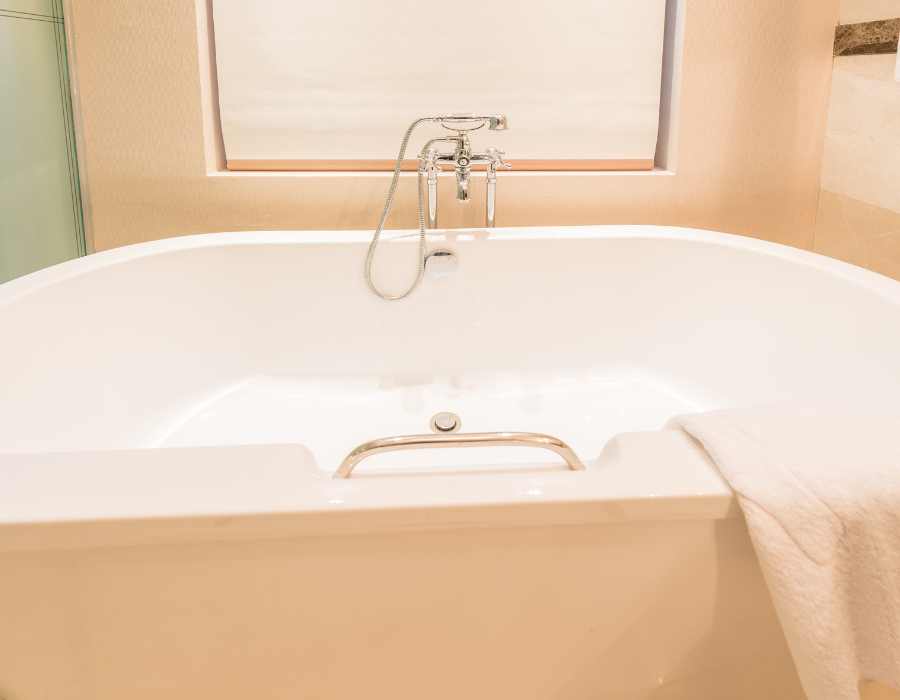
In Summary
Investing in a walk-in tub requires careful consideration of the upfront expense as well as ongoing maintenance and the potential for repairs down the road. But for many homeowners, especially those looking to age in place or accommodate a family member’s accessibility needs, the benefits a walk-in tub provides in terms of safety, independence, and therapeutic value make the investment worthwhile.
The total cost can range dramatically based on the size, features, materials, and installation considerations outlined here. No matter what your budget is, the key is finding the right balance of affordability and functionality.
Work with an experienced dealer who can guide you through the planning process, account for all installation factors, and help customize the perfect walk-in tub solution for your unique needs.

